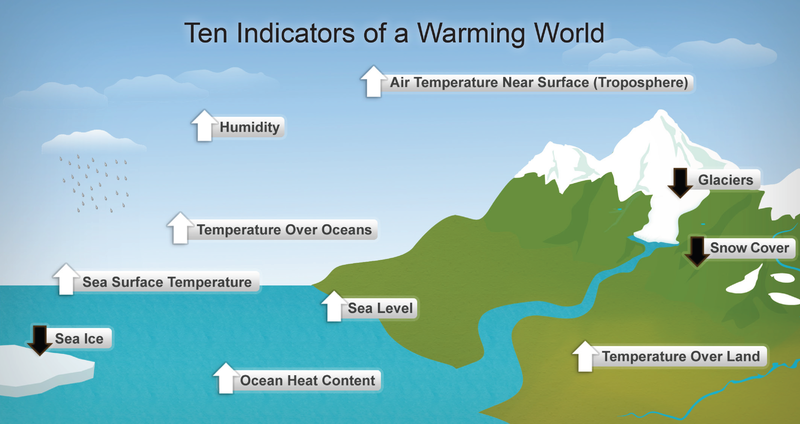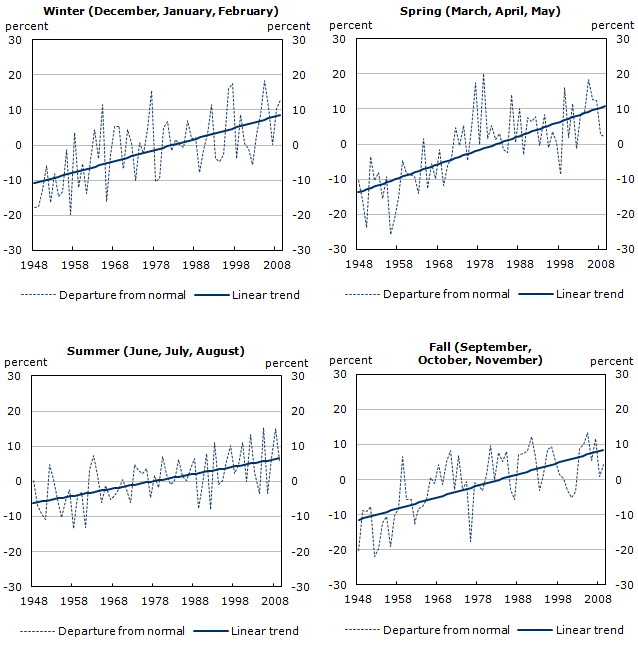8. Physical Geography of British Columbia
Climate Change and Environment in BC
Climate change is a significant and lasting reality in our world today. It refers to change in weather patterns over time, and it includes a variation in the average weather patterns and/or more extreme weather patterns such as increased precipitation or drought. Natural factors such as biotic processes, variations in solar radiation received by Earth, plate tectonics and volcanic eruptions can have an influence on climate change, but by far the most significant is the impact of human activities (Dessai et al., 2004).

Think about the richness of BC’s natural resources such as clean water and air, timber, game, fish, scenery, flood-control natural barriers, metals, minerals and natural gas; many of these natural goods and services are impossible to replace. How does climate change impact the province?
In many parts of BC, snowpacks are projected to continue to decrease. Less snow means that there is less snowmelt in the spring and less runoff in summer. These declining amounts of water affect many industries, such as hydropower, agriculture and fisheries. While precipitation trends from normal have increased (see Figure 2), the increase in negative variation in spring indicates risk of variation events rather than simply the risk of less evapotranspiration and precipitation over time. Where glaciers contribute to the volume of water flow, long-term loss of glacier mass will further increase water shortages.
We already have examples of the effect of less snow with the seasonal droughts of 2003 and 2009, which show the vulnerability of community and irrigation water supplies and point to what we may face in the future. These seasonal droughts, along with high interface forests, contributed to the Okanagan forest fire of 2003, and increased temperatures have contributed to the epidemic of the mountain pine beetle.

Each person can make a difference in a small way, but as a province some of the actions needed include:
- Reducing emissions by using cars less, buying food locally, using eco-friendly products where possible, buying energy-efficient appliances, getting energy from renewable sources, and finally turning down heat sources in winter by just two degrees.
- Ensuring that communities and businesses are more resilient and able to deal with extreme weather events through preparedness. An example in BC is the creation of FireSmart communities, which require planners and architects to design new buildings and infrastructure with the changing climate in mind.
Attributions
- Figure 8.4 Ten indicators of a warming world. By US National Oceanic and Atmospheric Administration: National Climatic Data Center (http://commons.wikimedia.org/wiki/File:Diagram_showing_ten_indicators_of_global_warming.png) is in the public domain
- Figure 8.5 Seasonal mean precipitation percentage departure from 1961 to 1990 normal and linear trend for Canada, 1948 to 2009. By Environment Canada, 2010, Climate Trends and Variations Bulletin (CTVB) www.ec.gc.ca/adsc-cmda/default.asp?lang=En&n=F3D25729-1

